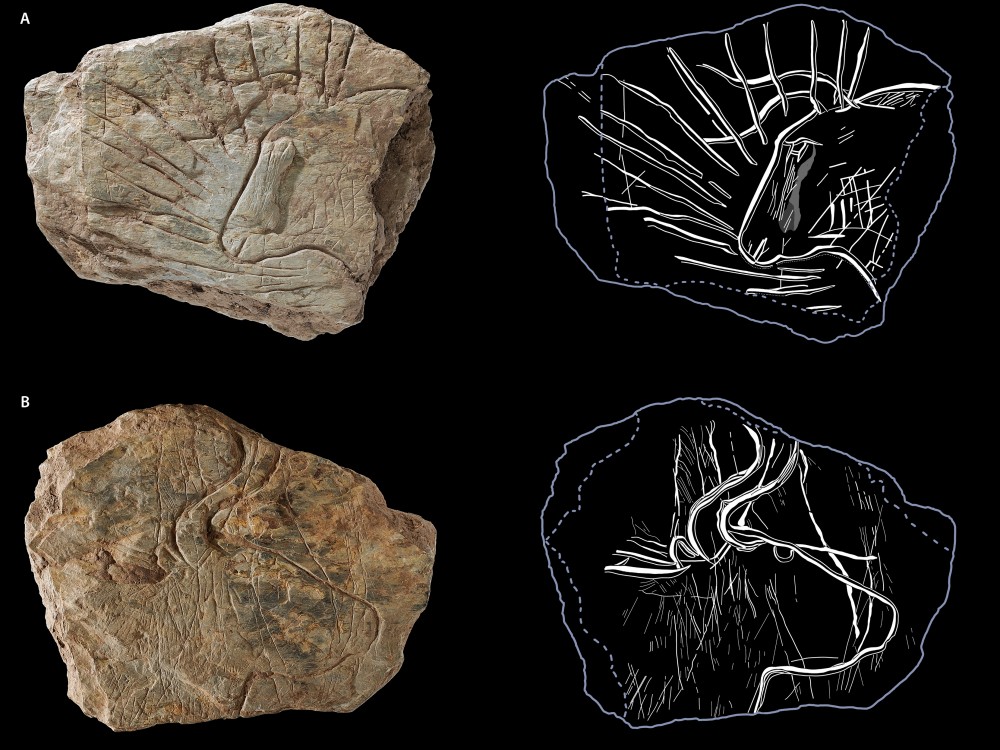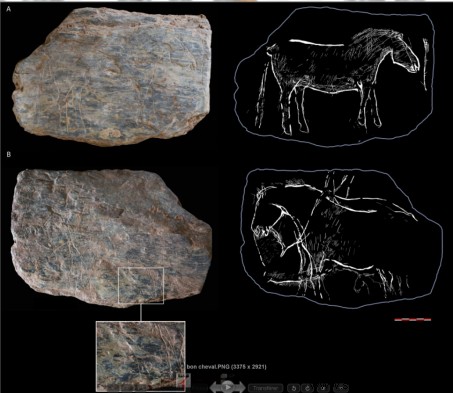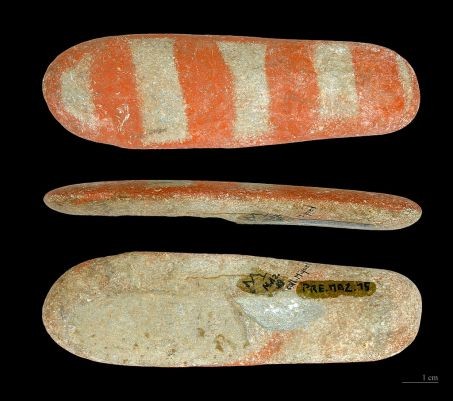Portable art plaques decorated with 14,500-year-old animal figures were discovered for the first time in Brittany. Unpublished iconographic evidence from the end of the Upper Paleolithic in this region of Western Europe.

Dated 14,500 years ago, these plates engraved with unpublished bull's heads were discovered in Brittany.
The site of the Rocher de l'Impératrice, near Plougastel-Daoulas, in Finistère, concealed a well-kept secret. Shale plaques delicately engraved with animal figures over 14,000 years old! Their discovery is one of the most beautiful made in recent years in France. It is thanks to the fall of a tree, and the long general exploration of the cliff which it dominated by Michel Le Goffic, then responsible for the departmental center of Archeology of the Departmental Council of Finistère, that the first flint shards have been spotted below the rock bar as early as 1987, inside a rodent hole in a cave.
A horse and an auroch's head "without equivalent in the iconography of the European Palaeolithic"
However, it took 30 years for Nicolas Naudinot (University Côte-d'Azur CNRS-CEPAM*) and his team to be authorized to begin excavations in the small rock shelter less than 10 m long called du "Empress Rock". From the 2013 summer campaign, prehistorians were dumbfounded:they unearthed plaques engraved in the middle of arrowheads and flint tools! None of the researchers expected such a finding. For fear of looting, they then decided not to make it public, until the official announcement appeared in the magazine Plos One**, dated March 3, 2017.
Among the 45 decorated schist plaques from 15 cm to 30 cm long unearthed to date, two magnificent representations of animal figures have especially caught the attention of the experts:a complete horse and an auroch's head haloed with "rays", "unparalleled in European Paleolithic iconography “, according to Camille Bourdier, co-signer of the article. In both cases, ruminant and equine were represented on each side of the plates, in different postures.

Engraved plaque of horses discovered on the site of the Rocher de l'Impératrice. © Nicolas Naudinot
These parietal works from the end of the Upper Paleolithic could be dated to the beginning of the Azilian culture. A period of transition between the Magdalenian and the Azilian, located around 14,500 years ago and long characterized from an artistic point of view by the abandonment of naturalistic figurative art in favor of geometric shapes.

Example of Azilian pebbles with geometric decorations. © Toulouse Museum
The discoveries of the prehistoric site of the Rocher de l'Impératrice seem to suggest a longer naturalistic graphic production than previously thought. "For a long time it was believed that there had been a break between the Magdalenian and the Azilian , explains Nicolas Naudinot, joined by Sciences et Avenir. Actually, the hunter-gatherers of Rocher de l’Impératrice maintained artistic concepts inherited from the Magdalenian while adopting techniques typical of the Azilian for the size of their flint tools. We have proof that there was no abrupt break between these two cultures, but a gradual development ". These discoveries should therefore help prehistorians to better understand the little-known transitional period that is the Azilian.
Because of these important results, the Rocher de l'Impératrice, whose work is supported by the departmental council, and the regional directorate of cultural affairs (Drac), will be studied for another three years.
*CEPAM:Culture and environments, prehistory antiquity Middle Ages
** "Divergence in the evolution of Paleolithic symbolic and technological systems:The shining bull and engraved tablets of Rocher de l'Impératrice”, Plos One, March 3, 2017, Nicolas Naudinot, Camille Bourdier, Marine Laforge, Céline Paris , Ludovic Bellot-Guriet, Sylvie Beyries, Isabelle Thery-Parisot, Michel Le Goffic
